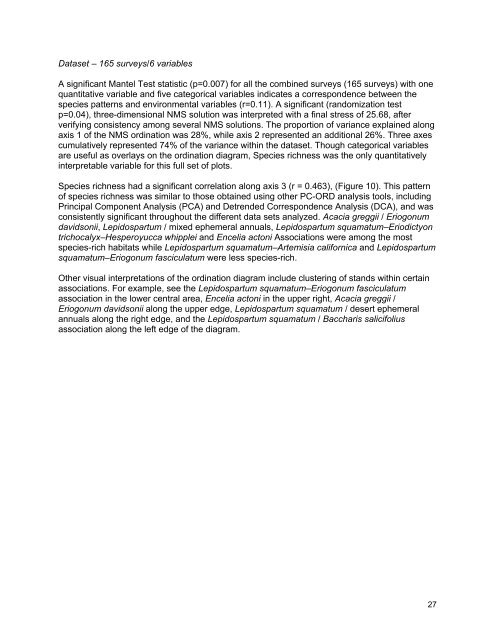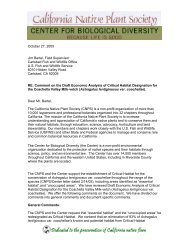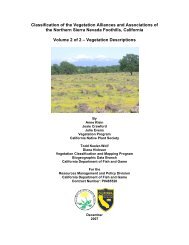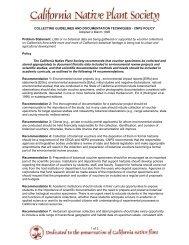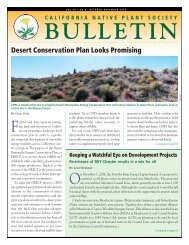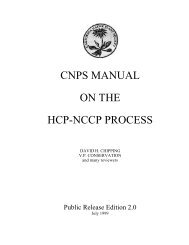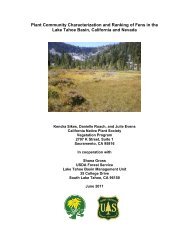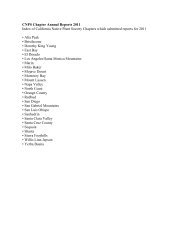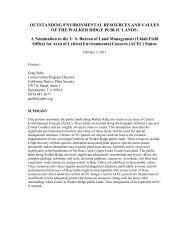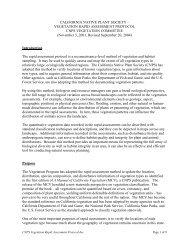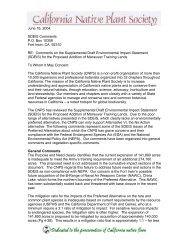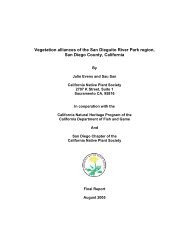Vegetation Report - California Native Plant Society
Vegetation Report - California Native Plant Society
Vegetation Report - California Native Plant Society
- No tags were found...
You also want an ePaper? Increase the reach of your titles
YUMPU automatically turns print PDFs into web optimized ePapers that Google loves.
Dataset – 165 surveys/6 variables<br />
A significant Mantel Test statistic (p=0.007) for all the combined surveys (165 surveys) with one<br />
quantitative variable and five categorical variables indicates a correspondence between the<br />
species patterns and environmental variables (r=0.11). A significant (randomization test<br />
p=0.04), three-dimensional NMS solution was interpreted with a final stress of 25.68, after<br />
verifying consistency among several NMS solutions. The proportion of variance explained along<br />
axis 1 of the NMS ordination was 28%, while axis 2 represented an additional 26%. Three axes<br />
cumulatively represented 74% of the variance within the dataset. Though categorical variables<br />
are useful as overlays on the ordination diagram, Species richness was the only quantitatively<br />
interpretable variable for this full set of plots.<br />
Species richness had a significant correlation along axis 3 (r = 0.463), (Figure 10). This pattern<br />
of species richness was similar to those obtained using other PC-ORD analysis tools, including<br />
Principal Component Analysis (PCA) and Detrended Correspondence Analysis (DCA), and was<br />
consistently significant throughout the different data sets analyzed. Acacia greggii / Eriogonum<br />
davidsonii, Lepidospartum / mixed ephemeral annuals, Lepidospartum squamatum–Eriodictyon<br />
trichocalyx–Hesperoyucca whipplei and Encelia actoni Associations were among the most<br />
species-rich habitats while Lepidospartum squamatum–Artemisia californica and Lepidospartum<br />
squamatum–Eriogonum fasciculatum were less species-rich.<br />
Other visual interpretations of the ordination diagram include clustering of stands within certain<br />
associations. For example, see the Lepidospartum squamatum–Eriogonum fasciculatum<br />
association in the lower central area, Encelia actoni in the upper right, Acacia greggii /<br />
Eriogonum davidsonii along the upper edge, Lepidospartum squamatum / desert ephemeral<br />
annuals along the right edge, and the Lepidospartum squamatum / Baccharis salicifolius<br />
association along the left edge of the diagram.<br />
27


